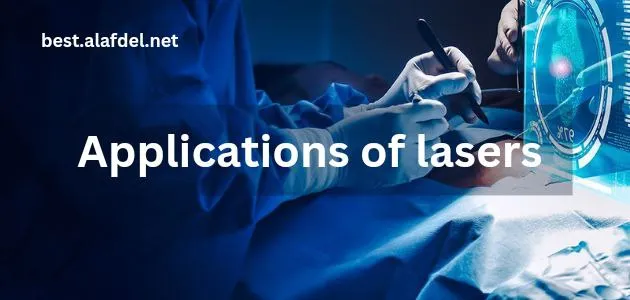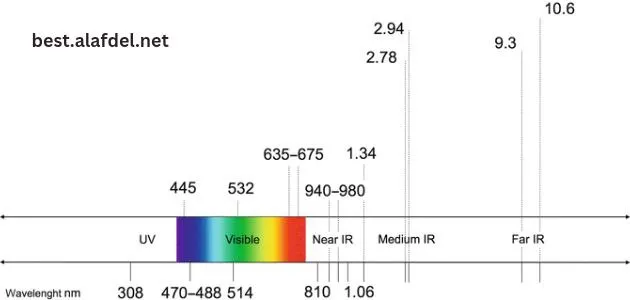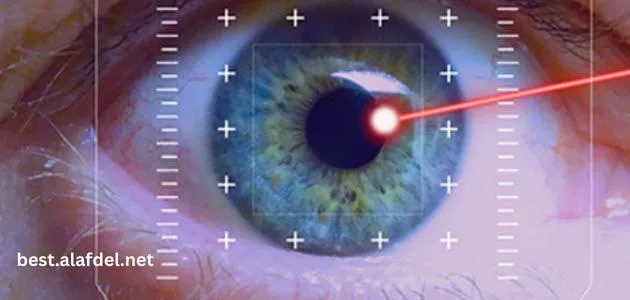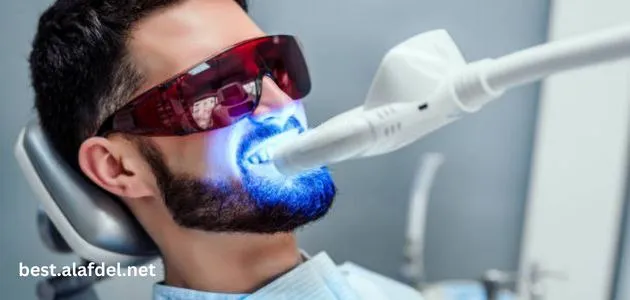Applications of Lasers; their powerful uses in Dentistry and Ophthalmology
Applications of Lasers
Applications of Lasers; learn about their 5 best uses in Dentistry and Ophthalmology, four main classes, and their role in diagnosis and treatment

Applications of Lasers; Lasers have revolutionized the medical field in a number of ways, offering a wide range of applications for diagnosing and treatment, From cutting and coagulating tissue and removing unwanted hair and tattoos to treating skin conditions.
In this article, we will explore the various applications of lasers, highlighting their use in many specialties, such as ophthalmology and dentistry. We will also discuss the Important tips before using lasers in dermatology to ensure the best outcome for the patient.
the role of applications of lasers in diagnosis and treatment
Lasers play a significant role in diagnosis and treatment in the medical field.
In diagnosis
applications of lasers used in a variety of imaging techniques, such as laser-induced fluorescence, laser microscopy, and tomography. These techniques allow for highly detailed imaging of internal structures and can be used to diagnose a variety of conditions, such as cancer and cardiovascular disease.
In treatment
applications of lasers are used in a wide range of procedures, including surgery, therapy, and aesthetic treatments, For example:
- laser surgery allows for precise cutting and removal of tissue with minimal blood loss and minimal damage to surrounding tissue.
- low-level laser therapy (LLLT) is used to promote healing and reduce pain.
- In aesthetic treatments, lasers are used for hair removal, wrinkle reduction, and tattoo removal.
- laser therapy is used to treat various medical conditions such as cancer, cardiovascular disease, and neurological disorders.
” Read Also; How Does The Psychiatrist Deal With His Stress?”
main classes of lasers in medicine

There are several main classes of lasers used in Applications of Lasers in medicine, including:
- Low-level laser therapy (LLLT) or Cold Lasers: These lasers emit low-energy light, which is absorbed by cells and tissues to promote healing and reduce pain.
- CO2 laser: This type of laser is commonly used for surgical procedures, such as cutting, vaporizing, and ablation of tissues.
- Diode laser: These lasers are used in a wide range of medical procedures, such as hair removal, wound healing, and dental treatments.
- Nd: YAG laser: This type of laser is used for a variety of medical procedures, including tattoo removal, vascular treatments, and hair removal.
- Alexandrite laser: These lasers are used for hair removal, pigmented lesion removal, and vascular lesion treatment.
- Erbium: YAG laser: This type of laser is used in dental and dermatological procedures, such as tooth whitening and wrinkle reduction.
- Holmium laser: This type of laser is used for urological procedures such as kidney stone fragmentation and prostate surgery.
- KTP laser: This type of laser is used for vascular and pigmented lesion treatment.
- Pulsed dye laser: This type of laser is used for vascular lesion treatment and port wine stain treatment.
- Ruby laser: This type of laser is used for hair removal and tattoo removal.
” Read Also; obesity damage“
applications of lasers in ophthalmology

there is a wide range of applications of lasers in ophthalmology, some of the most common include:
- LASIK (Laser-Assisted In Situ Keratomileusis): This is a surgical procedure used to correct vision problems such as nearsightedness, farsightedness, and astigmatism.
- PRK (Photorefractive Keratectomy): in which the surface layer of the cornea is removed to reshape the underlying tissue.
- Laser Trabeculoplasty: This type of laser is used for treating open-angle glaucoma.
- Laser Retinopexy: This procedure is used to repair retinal tears or detachments by using a laser to create small burns around the tear or detachment to seal it.
- Laser Cataract Surgery: This is a new way to remove cataracts, which uses a laser to soften and break up the cloudy lens before removing it.
- Laser Cataract Surgery: This is a new way to remove cataracts, which uses a laser to soften and break up the cloudy lens before removing it.
- Diabetic Retinopathy: Lasers are used to seal leaking blood vessels in the eye caused by diabetic retinopathy.
- Macular Degeneration: Lasers are used to destroy abnormal blood vessels in the eye that cause macular degeneration.
- Laser Iridotomy: This procedure is used to treat narrow-angle glaucoma by making a small hole in the iris to allow the fluid to flow more freely.
- Refractive laser surgery: This procedure uses a laser to reshape the surface of the cornea to improve eyesight
- Laser Therapy for Age-related Macular Degeneration (AMD): This treatment uses the laser to target the abnormal blood vessels that grow under the retina so that the growth is stopped.
” Read Also; Diabetic care 2023“
applications of lasers in dentistry

After learning about the applications of lasers in ophthalmology (their powerful uses), we will now explore the applications of lasers in dentistry. applications of lasers are used in dentistry for a variety of procedures, including:
- Cavity detection: Dental lasers can be used to detect cavities in the early stages, allowing treatment of it.
- Teeth whitening: Dental lasers can be used to accelerate the teeth whitening process by activating the bleaching agent.
- Gum reshaping: Dental lasers can be used to reshape and contour the gums for a more aesthetically pleasing appearance.
- Biopsy: Dental lasers can be used to take tissue samples for biopsy, which can be used to diagnose oral cancer and other diseases.
- Cold sore treatment: Dental lasers can be used to speed up the healing of cold sores by reducing inflammation and promoting healing.
- Soft tissue surgery: Dental lasers can be used for a variety of soft tissue surgical procedures, including the removal of overgrown tissue, the treatment of gum disease, and the removal of benign tumors.
- Orthodontics: Dental lasers can be used to assist with orthodontic procedures such as aligning teeth, and preparing teeth for orthodontic treatment.
- Dental implant surgery: Dental lasers can be used to prepare the site for the placement of dental implants and to assist with the healing process post-surgery.
” Read Also; High Blood Pressure“
Important tips before using lasers in dermatology
When using lasers in dermatology, it is important to follow several tips to ensure the best outcome. These tips include:
- Before applying lasers to your skin, the practitioner must receive proper training and education on the use and safety of lasers using it.
- Certain medical conditions and skin types may not be suitable for laser treatment, so it is important to carefully evaluate the patient’s medical history and skin type before proceeding with laser treatment.
- applications of lasers call for the use of Protective equipment for eyes and clothing during work to prevent injury to the doctors and the patient.
- The laser should be set to the appropriate settings based on the patient’s skin type, the condition being treated, and the area of the body being treated.
- use proper cooling gels or sprays, to protect the skin and reduce the risk of burns or other complications.
- It is important to provide the patient with proper post-treatment care instructions, including instructions on sun protection and avoiding certain activities or products that can irritate the skin.
At the end of the article, we learned about the applications of Lasers, the role of lasers in diagnosis and treatment, and their applications in ophthalmology and dentistry (5 best Effects in medicine), we also presented Important tips before using lasers in dermatology, and It is important to remember that laser treatments can have potential risks and side effects, and it is important to select experienced doctors to perform the treatment.

Comments are closed.